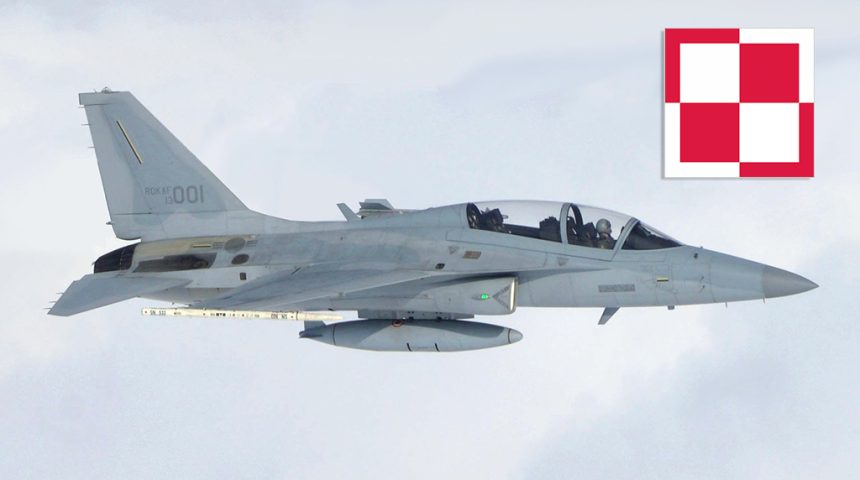Procurement of another type may have no real benefit.
Spokesman for the Polish Armament Agency (Polish MoD’s defense procurement organ) stated, via his Twitter account, that Warsaw is considering acquisition of the KAI FA-50 as a potential reinforcement of the Polish Air Force. The news appeared in the Polish public sphere in the wake of the MoD’s representatives’, including the head of the Polish MoD, Mariusz Błaszczak, visit to Korea, where they have been discussing the potential for industrial cooperation between Poland and Korea. The main subject of the talks concerned the Wilk main battle tanks program pursued by the MoD. nonetheless, it is also worth to discuss the air domain portion of this visit.
Skoro 🇵🇱delegacja zapoznawała się z ofertą Korea Aerospace Industries, to można dopowiedzieć, że FA-50 jest rozważany jako platforma mogąca stanowić wzmocnienie 🇵🇱Sił Powietrznych.
— Krzysztof Płatek (@krzysztof_atek) May 31, 2022
The statement is puzzling, to say the least. As Poland operates the M-346 Master in the trainer role already, with more on the way, and with the F-16s being the backbone of the air force, and with imminent procurement of the F-35, it is quite difficult to assess the rationale behind such an acquisiton. Back in Oct. 2020 the Polish MoD decided to procure 8 additional Masters, bringing the total number of the Italian AJT platforms to 16.
Dawid Kamizela, Polish defense analyst working for the Nowa Technika Wojskowa, and Frag Out! magazines told us: “The T-50 is already known in Poland, as the T-50 competed against the M-346 in the LIFT (Lead-in Fighter Trainer) program. As we all know, the Italian platform won that tendering procedure. If we were to justify the procurement of the FA-50 now, it would only be possible if the T-50 won that LIFT tender. If any niche for aircraft as such – combat-capable trainer – exists in the Polish Air Force, then, for obvious reasons – the M-346 should be the primary choice.”
The Polish Air Force would need to establish a new supply/maintenance chain for an entirely new, exotic platform, following the already costly F-35 procurement. Maintaining three different platform types may pose a significant challenge. The infrastructure for FA-50 would include hangars, but some challenges within the scope of logistics and training, not to mention spares and consumables, would need to be addressed. Even if the FA-50 is considered as a light combat aircraft, its limited payload capacity, or lower performance envelope for the air-to-air missiles (due to the lower speed) may also seem to be a major problem. The only scenario in which the FA-50 could offer a potential as a combat aircraft is when the adversary operates obsolete 2nd or 3rd gen platforms, such as MiG-19, or MiG-21 – as in case of North Korea. Some wild statements were being made weeks ago, suggesting the FA-50 could replace the Polish MiG-29s, after these are potentially handed off to Ukraine – but neither did transfer as such happen, nor is it currently on the table, as a potential option.
Instead of procuring another type of aircraft, one may risk a statement that Poland would be far better off getting engaged in allied interoperability programs, such as the MMF (Multinational MRTT Fleet), or the NATO AWACS component. These would actually realistically reinforce the potential available to the Polish Air Force, without necessarily harming the already heavily burdened logistics chain.
Defence24 meanwhile also speculated that Korea could potentially offer a transfer of its second hand KF-16 MRCA – as a potential reinforcement of the Polish Air Force’s capability, This seems to be a more sensible option, since it would not be such a strain on the maintenance chain, as KF-16 exhibits a high degree of commonality with the Polish F-16 Block 52 jets.









